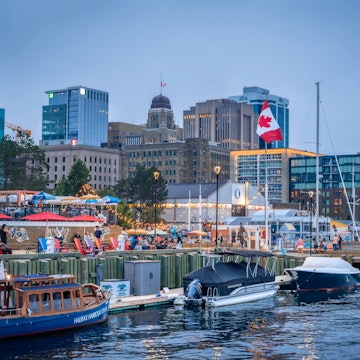

Signal Hill in St John's Newfoundland and Labrador, Canada. Jamo Images/Shutterstock
Vibrant row houses painted every color of the rainbow. A lively two-block street packed with the most bars per capita of any major Canadian city. Fish and chips at every turn and moose burgers for adventurous eaters. Boat trips that take you searching for icebergs and whales. These are just some of the reasons travelers gravitate to St John’s, the famously friendly capital of Newfoundland and Labrador.
The big question is whether you will get screeched-in or just watch others take part in an admittedly silly yet charming tradition that turns CFAs (“come from aways”) into honorary Newfoundlanders by making them recite a short verse, drink a shot of Newfoundland Screech rum, eat bologna and kiss a cod.
If you’re visiting Canada’s youngest province, chances are you’re flying into St John’s. The port city of nearly 114,000 people is also a great urban base to explore the region before heading off to see the rest of the province. Make the most of your time here with this guide.

When should I go to St John’s?
The best time to visit is from the Victoria Day long weekend in May to Canadian Thanksgiving in October, but St John’s really comes to life in July and August, when temperatures hover between 20ºC (68ºF) and 23ºC (73.4ºF) and the streets are packed. Summer brings the George Street Festival (that bar-packed street), with local, national and international musicians, the Royal St. John’s Regatta and the NL Folk Festival. Bell Island, with a unique iron ore mining history and unusual geology, is just a short ferry ride away from Portugal Cove near the airport.
While businesses in this province can be highly seasonal, cosmopolitan St John’s is always open, and hotel prices are lower in shoulder and low seasons. Hurricane season runs from June through November here, as in the rest of Atlantic Canada, but you should always come prepared for wind and rain.
If you visit during late November through mid-December, you can catch the Mummers Festival, a multi-day community event that celebrates a Christmas season tradition culminating in a quirky parade where “underwear is outerwear.”
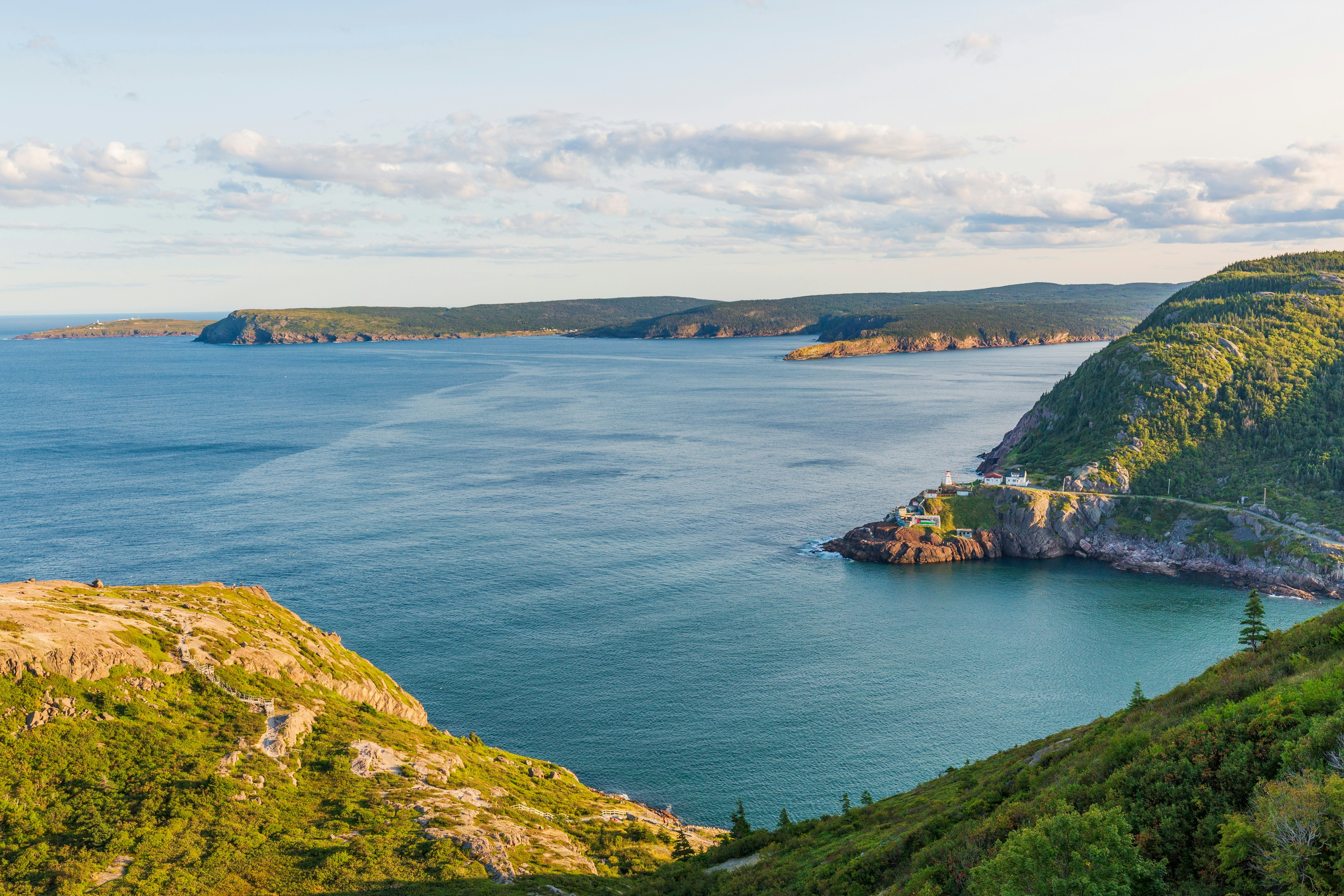
How much time should I spend in St John’s?
Plan to spend two to three nights here, perhaps divided between the start and end of a longer trip around the province. Stroll around downtown, browsing shops like the Craft Council Shop & Pantry, Posie Row and Fred’s Records and dining at the The Merchant Tavern and Rabble Restaurant. Have a museum moment at The Rooms – the province’s largest public cultural space that looms over downtown and has a wonderful café with harbor views.
How do I get to St John’s?
Book a flight to St. Johns International Airport (YYT). Air Canada and WestJet offer nonstop flights from cities like Toronto, Halifax and Montreal year-round and seasonally from other Canadian cities. You might make your way to St John’s after flying into Deer Lake Regional Airport (YDF) to explore Gros Morne National Park or Gander International Airport (YQX) for trips to Fogo Island and Twillingate. Marine Atlantic ferries bring people (and their vehicles) from North Sydney, Nova Scotia, to either Argentia (a 90 minute drive to St John's) or Channel-Port aux Basques (a 9-hour drive).
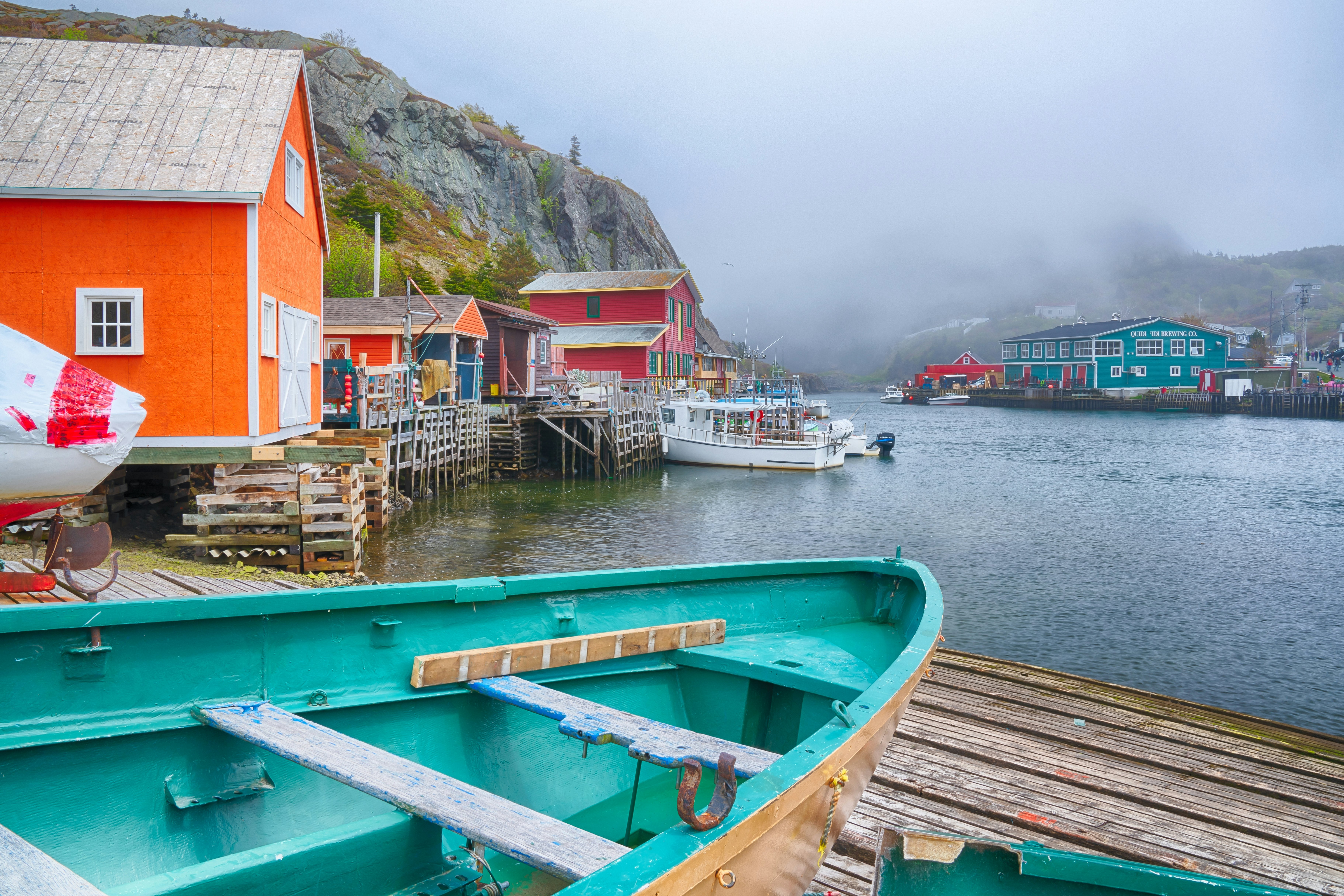
How do I get around St John’s?
Taxis and rideshare services like Uber are popular, but most visitors rent cars. They’re in high demand, so secure your vehicle before booking a flight. While some people hope to return their rentals to another location in the enormous province, it's typically not allowed or involves astronomical drop fees, so plan to start and finish trips here.
It’s just a 10-minute drive from the airport to downtown. If you don't have a rental car, expect to pay about $35 ($25 USD) for a taxi or rideshare to downtown. Turo, a car-sharing marketplace, is another option.
Downtown itself is compact and walkable. The St. John’s Hop on Hop Off bus has 10 stops – plus live commentary – and will help you get out to Cape Spear Lighthouse National Historic Site as well as Quidi Vidi, a nearby fishing village. The two-day pass is $60 (US$44) and cheaper than catching taxis.
Top things to do in St John’s
Eat your heart out on a food tour
Sure, you can DIY. But the joy of the Newfoundland Food Tour put on by St. John’s Walking Tours is having someone guide you to six restaurants and give you the stories behind why you’re eating moose, toutons (fried dough), fish cakes, local partridgeberries (aka lingonberries) and fries served with dressing and gravy (the local version of poutine). The Newfoundland Beer Tour celebrates local craft beer with seven samples at three breweries or bars.

Look for icebergs and whales
Fun fact: you never forget your first iceberg, and I saw mine (shaped like a giant toothy mouth) on an Iceberg Quest boat trip out of St John’s. Two-hour narrated trips take you as far as Cape Spear in search of humpback and other whales, icebergs and seabirds. Just south of town in Bay Bulls, O’Brien’s Whale and Bird Tours and Gatherall’s Puffin & Whale Watch cruise to the Witless Bay Ecological Reserve, home to North America’s largest Atlantic puffin colony. For an extra fee ($35 [US$25]), both companies offer shuttle services from most major hotels.
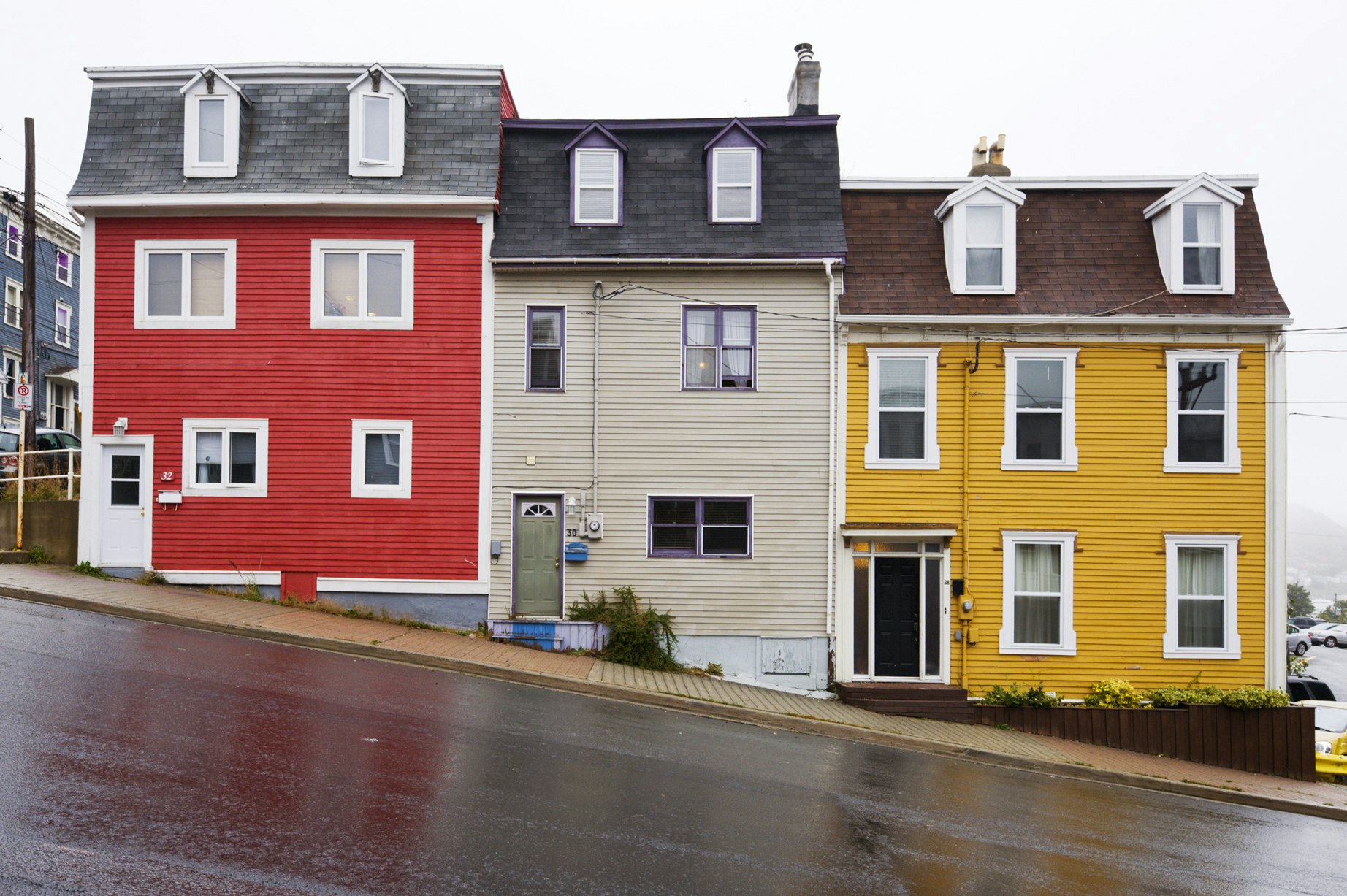
Find your own favorite Jellybean Row
It took me a while to figure out that Jellybean Row isn’t a single street – rather, it’s the nickname for all the colorful row houses scattered across downtown. Start your close encounters of the colorful kind, cameras in hand, on Prescott and Gower Streets.
Watch the sunrise (or sunset) at Cape Spear
Trust me when I say you want to get up when it’s still dark outside and make the 20-minute drive to Cape Spear Lighthouse National Historic Site for sunrise. It’s Canada’s most easterly spot, so you’ll be among the first people in the country to greet the day. But if you’re not a morning person, there’s always sunset. This Parks Canada site is also popular for land-based whale watching and picnics (ordered from the Cape Spear Café) by the province’s oldest surviving lighthouse.
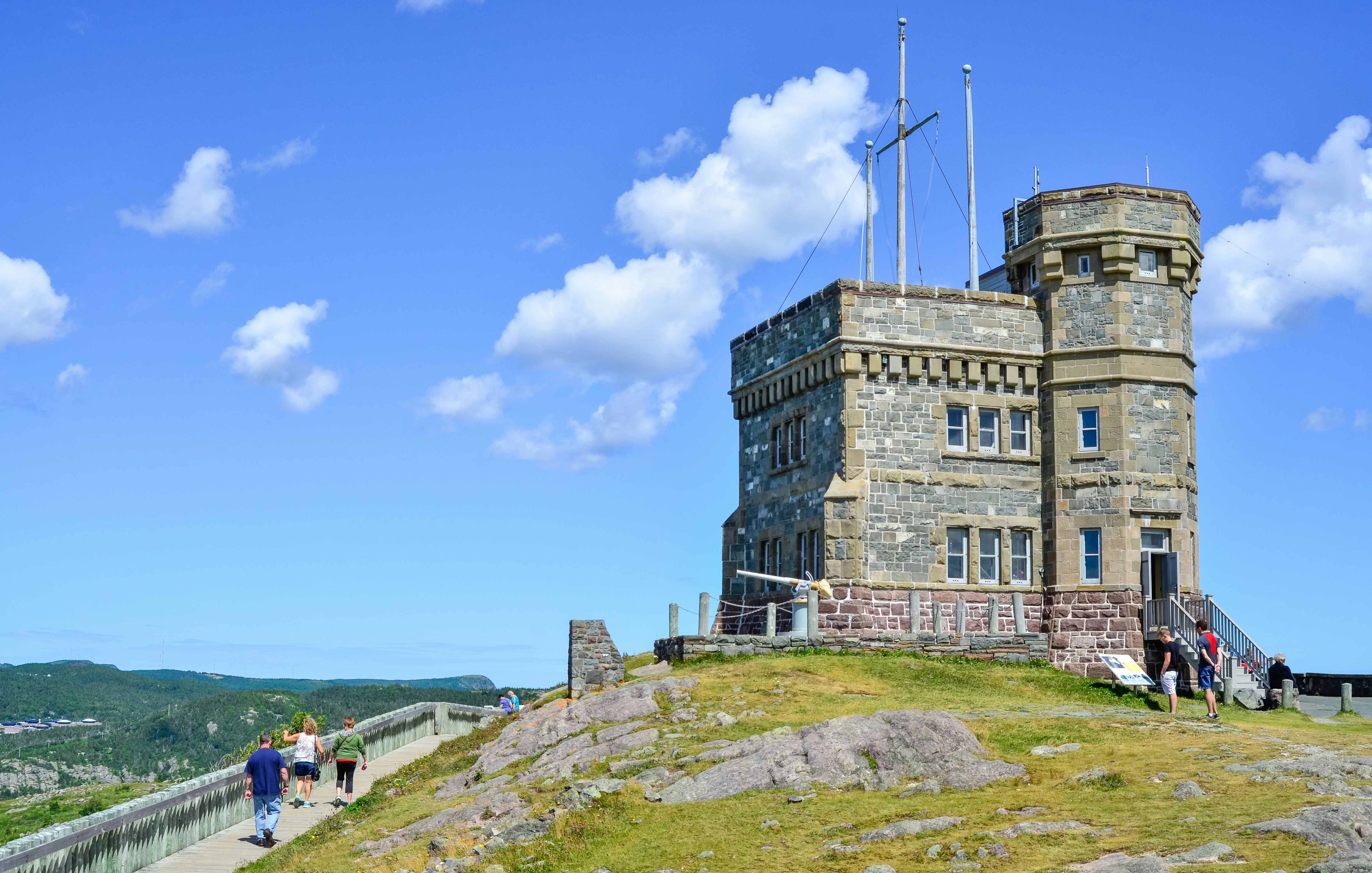
My favorite thing to do in St John’s
It’s hard to say what I love most about visiting Signal Hill National Historic Site – Sable the dog or Canada’s best urban hike. Sable is a gorgeous Newfoundland dog who often hangs out near Cabot Tower with his retired owner. Join the Sable the Signal Hill Dog Facebook group to track their schedule. Of course, Sable's presence isn’t guaranteed. The North Head Trail, however, offers 1.7km (1 mile) each way of astounding views and edge-of-the-ocean thrills, as long as the weather cooperates. Set off from the upper parking lot, climb down a steep set of wooden stairs and along the Narrows to end in the Lower Battery neighborhood. Some people prefer to hike in reverse from bottom to top.
How much money do I need for St John’s?
Newfoundlanders are a cost-conscious bunch, but post-pandemic prices have crept up here just like in the rest of Canada. There aren’t many budget lodgings, but Memorial University’s St. John’s Campus has seasonal rooms from mid-May to mid-July for $145 (US $91). Save money by walking everywhere and using rideshares and taxis sparingly. If you’re going beyond the city, keep in mind that car rentals are pricey (budget $1000 [US$730] a week) and often sell out in high season.
Night at a downtown hotel (summer): From $300 (US$215)
Coffee: Drip $2.90 (US$2.10), espresso $3.80 (US$2.80), latte $5 (US$3.65)
Typical screeched-in event: $42.50 (US$31)
Pint of craft beer: From $8 (US$5.80)
One-piece fish and chips: $19.99 (US$15)
Moose burger: $26 (US$19)
Admission to The Rooms: $13.80 (US$10)

Where should I stay in St John’s?
Staying downtown puts you within walking distance of all the action. The Alt Hotel St. John’s, part of a Québec boutique hotel chain, has small but stylish rooms, plus Terre restaurant for contemporary Canadian fare. Another favorite is the newly expanded, rock-themed JAG Hotel. Unveiled in April 2025, its new tower, Blues, connects to its original Rhythm building with a pedway. There are 169 music-inspired guest rooms, plus the JAG Soundhouse (a music venue), Revival Wellness Centre and several places to eat and drink. “Let’s spend the night together,” is the slogan of the edgy hotel that’s reportedly named for Mick Jagger.
Come again?
Locals have a very unique dialect and you’ll find popular sayings like “Yes b’y” ("Yes, boy" – often said in agreement) and “Whadda ya at?” ("How’s it going?") on Newfoundland Chocolate Company chocolate bars, T-shirts and other souvenirs. Unless you’re toting the Dictionary of Newfoundland English, don’t be afraid to ask people to translate what they're saying.
Ask the Welcome Desk
“There’s no question too big, or too strange, when planning a trip here,” promises Newfoundland and Labrador Tourism. Its website is full of travel tips, but you’re also officially invited to call the Welcome Desk at 1-800-563-6353 and chat with a human (with one of those distinctive accents).














